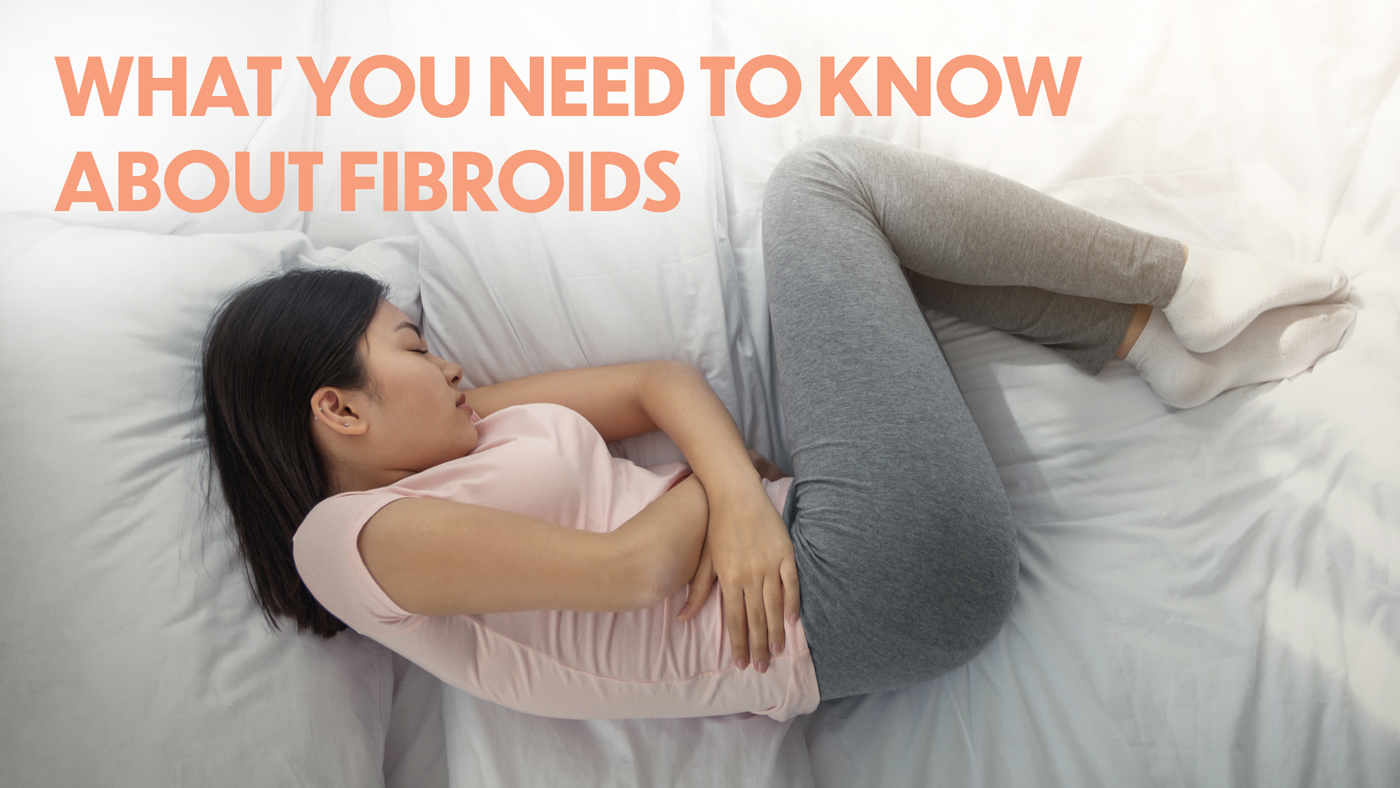Fibroids! What are they exactly?
Fibroids, also known as uterine myoma, are noncancerous growths in the uterus. They are simply globs of muscles within the uterine muscle. Think of them as moles on your skin; bunches of muscle fibres that form into solid clumps and can be found in varying shapes and sizes.
These growths can develop within the wall of the uterus, inside its main cavity or on its outer surface and can range from the size of a walnut to the size of a football. The different types of fibroids are defined based on where a fibroid develops:
Intramural: Form within the muscular wall of the uterus and are the most common type of fibroid.
Subserosal: Grow on the outside wall of the uterus.
Submucosal: Develop in the middle muscle layer of the uterus.
Fibroids are more common than you think. In fact, up to 80% of women have fibroids by the age of 50. Many may not even know it and some ethnicities have a higher prevalence.
What causes fibroids?
The exact reasons are unknown. It’s like when we are born with a mole or a birthmark, we don’t really know why. They are just there.
The prevalence does vary with race and ethnicity. Recently, there has been a correlation seen between fibroids and estrogen dominance (hormonal imbalance leading to other estrogen related conditions).
Obesity is also a risk factor. Recent data shows that being overweight, having a poor diet and a lack of exercise can cause a vicious cycle leading to estrogen overactivity which in turn can lead to fibroid growth.
Fibroids are usually painless, and many women don’t even know they have them. However, they can sometimes grow, change or cause trouble.
Some symptoms of uterine fibroids include heavy menstrual bleeding, prolonged periods, and pelvic pain.
How are fibroids diagnosed?
Fibroids are often found during routine pelvic exams when your doctor identifies irregularities in the shape of your uterus. If your gynecologist notices irregularities during an exam or you’ve communicated with them that you have symptoms, they’ll likely send you for tests to confirm a diagnosis.
Ultrasound
An ultrasound uses high-frequency sound waves to get a picture of your uterus to map and measure fibroids. Ultrasound devices can either be used over your abdomen or placed inside your vagina.
Pelvic MRI
An MRI (Magnetic Resonance Imaging) provides a more in-depth picture of your uterus, ovaries, and other pelvic organs. It is helpful to show the size and location of fibroids and help determine treatment options.
What health risks are associated with fibroids?
There are quite a few myths out there about what health risks are truly tied to fibroids.
First, fibroids are rarely painful. That said, if a fibroid is obstructing nerves or degenerating (the cells are dying), you’ll likely experience pain.
Another misconception is that fibroids cause weight gain. Only if a fibroid grows to be really big, which is rare, would there be weight gain associated with it. For this to happen, they need to grow to the size of a pumpkin or a football.
For women experiencing heavier than normal periods, only 30% of the time are fibroids the culprit. Fibroids grown within the uterine cavity can cause heavy or prolonged periods.
Fibroids are rarely cancerous. Less than 1% of fibroids develop into cancer.
How are fibroids treated?
Most fibroids require no treatment at all, but can be treated with medication or removed if needed.
For example, if your fibroids are resulting in heavy bleeding, growing rapidly or causing problems with urinating, your doctor may elect to treat or remove them. It’s important to note that fibroids almost always come back, which is why we recommend trying everything before jumping into surgery.
A healthy diet and an active lifestyle is also recommended to help control fibroid growth.
If you have fibroids, it’s recommended that you monitor for changes and consult your doctor if you’re experiencing symptoms.
Have more questions about fibroids? Contact us at info@walkingyn.com.
Be safe, be strong and be prepared!
Dr. Adeeti Gupta

